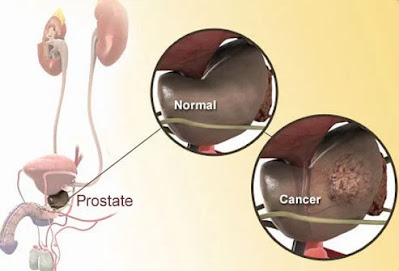What's Prostate Cancer, Symptoms And Treatments
Uncontrolled (malignant) growth of cells in the prostate is a symptom of prostate cancer. The prostate is a walnut-sized gland just below the bladder and in front of the rectum in men. It surrounds the urethra, which is the tube that carries urine from the bladder. The prostate creates and retains fluid that helps produce sperm.
In addition to skin cancer, prostate cancer is the most common type of cancer detected in men in the United States and often develops without symptoms. Because prostate cancer is a slow-growing cancer, many men die from other conditions before it can cause significant problems. Many types of prostate cancer, on the other hand, are more aggressive and can spread outside the prostate, which can be fatal.
Prostate cancer survival rates have increased dramatically with early detection and individualized treatment.
What factors contribute to the development of prostate cancer?
Although the specific etiology of prostate cancer is unknown, researchers are studying various risk factors to see if they play a role in the development of prostate cancer.
Prostate cancer is a disease that affects men of all ages.
Some men have a higher risk of prostate cancer than others, which can affect when they should start screening. The risk increases with age, especially after the age of 50. Here are some of the risk factors:
African-American men are twice as likely to develop the disease as white men.
Having a family history of prostate cancer, such as a father or brother diagnosed at an early age, is a risk factor.
Having a family history of breast and ovarian cancer may also be linked to an inherited risk of prostate cancer (BRCA gene mutation).
Obesity and / or high fat diet
How do you know if you have prostate cancer?
Prostate cancer, in most cases, is asymptomatic.
When men have advanced prostate cancer, they may have some symptoms in rare circumstances. However, these symptoms are also present in many men who do not have cancer, so it is a good idea to talk to a doctor about them before drawing any conclusions. Difficulty emptying the bladder, blood in the urine and bone discomfort are possible signs.
Is it possible to prevent prostate cancer?
Prostate cancer has no well-defined preventive measures. There is conflicting evidence that a low-fat, high-vegetable, high-fat diet will help reduce the risk of prostate cancer. Prostate cancer can be detected early by a routine exam, including a PSA blood test and a physical exam. Maintaining good health and preventing disease generally requires a nutritious diet and regular physical activity.
Treatment for low-risk prostate cancer
Prostate cancer is detected at an early stage by widespread PSA and DRE screening. However, a large percentage of discovered prostate cancers grow slowly and do not threaten a man's lifespan.
active monitoring
Active Surveillance is an organized follow-up program for men with slow-growing tumors who choose to wait for surgery or radiation therapy, hopefully for the rest of their lives, as they are considered to be at low risk for cancer. Even after being under active supervision for several years, research shows that men in need of treatment can still receive adequate treatment.
Treatment Alternatives
A treatment will be recommended for some men based on their age, cancer features, and family history. This is frequently a highly personal decision taken by the clinician and the patient. Low-risk prostate cancer can be treated with surgery as well as several types of radiation.




Comments